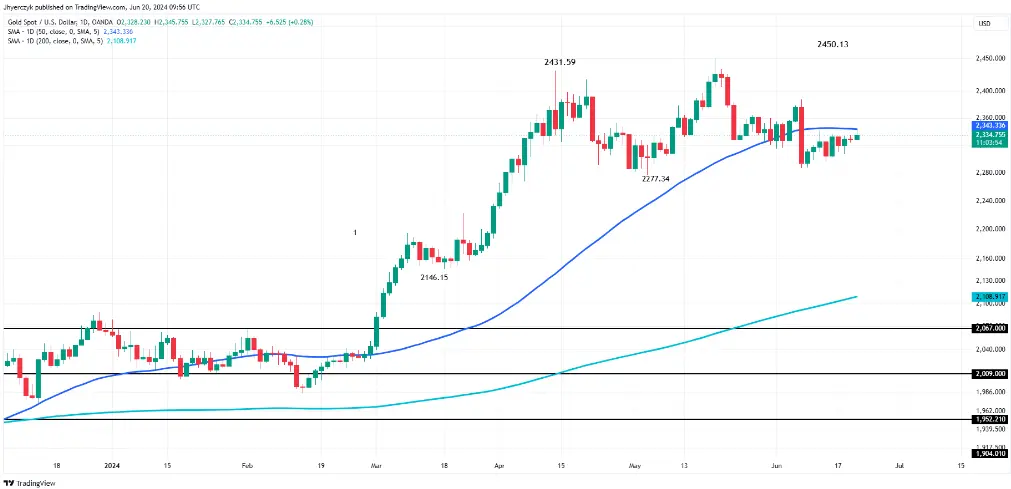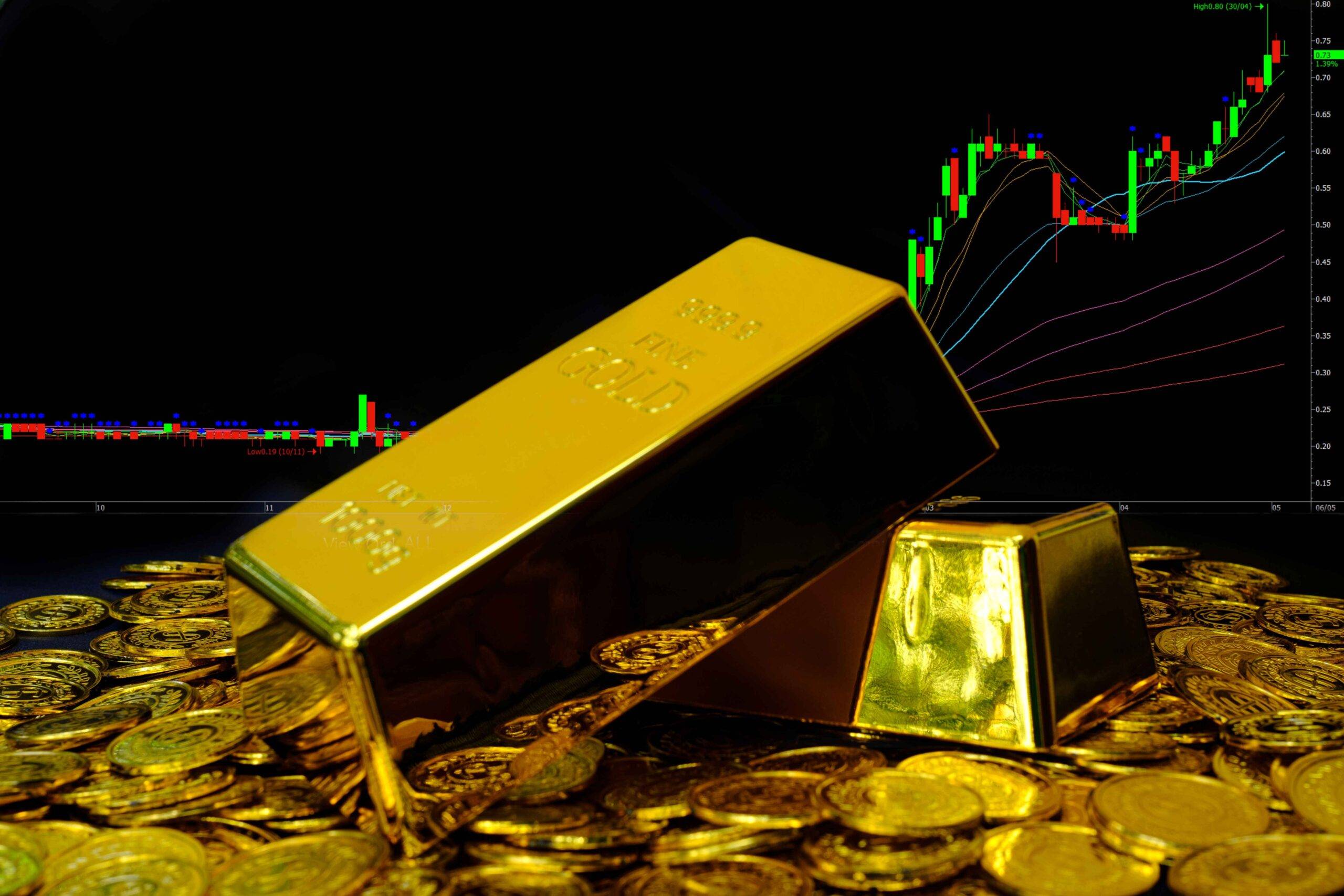Gold prices have been on the rise, reaching significant highs as speculations about interest rate cuts by the Federal Reserve grow stronger. This upward trend is closely linked to the latest US economic data, which points to potential shifts in monetary policy. Investors and traders alike are keeping a close watch on these developments, as they could lead to lucrative opportunities in the gold market.
Impact of US Economic Data on Gold Prices
Recent US economic data has revealed signs of a slowdown, potentially prompting the Federal Reserve to reevaluate its interest rate strategy. For instance, softer retail sales and labor market figures hint at a less robust economy than previously believed. Consequently, this situation elevates expectations that interest rate cuts may be forthcoming, directly influencing gold prices. Historically, lower interest rates reduce the opportunity cost of holding non-yielding assets such as gold, thereby enhancing its appeal.
Furthermore, weak economic indicators often lead investors to seek safer assets, escalating demand for gold. As investors anticipate lower interest rates, they shift their focus from yield-bearing assets to gold, which supports price increases. Additionally, uncertainties surrounding economic recovery can exacerbate this trend, further driving up gold prices.
The connection between US economic data and gold prices is well-documented. When data points to economic weaknesses, the Federal Reserve might implement rate cuts to stimulate growth. Such cuts usually result in a weaker dollar, making gold cheaper for holders of other currencies and increasing demand.
Gold Prices and Investor Behavior
The behavior of investors also reacts sharply to changes in economic indicators. Market sentiment tends to shift towards caution as investors digest the implications of the data. This cautious stance often results in increased allocations to gold. Moreover, gold’s historical role as a hedge against inflation comes into play when economic data suggests an increasing probability of inflationary pressures.
Investors keep a close watch on updates related to US economic performance. Any indication of continued economic softness could lead to sustained interest in gold. This interest not only pushes gold prices higher but also stabilizes them at elevated levels during periods of economic uncertainty.
Overall, the interplay between US economic data and gold prices is a dynamic aspect of financial markets. As the Federal Reserve responds to economic signals, the impact on gold prices remains a key point of focus for investors globally. Therefore, understanding this relationship is crucial for those looking to navigate the complexities of investing in gold effectively.
Federal Reserve’s Role in Shaping Market Sentiment
The Federal Reserve significantly influences market sentiment through its monetary policy decisions. Any signs of easing rates typically cause an increase in gold prices. Presently, the market is responding to mixed signals from Federal Reserve officials. Some of these officials urge caution, while others suggest possible interest rate cuts if economic conditions deteriorate further. This mixed messaging fuels uncertainty among investors, leading to notable fluctuations in gold prices.
Investors scrutinize every statement and policy update from the Federal Reserve, seeking clues about future economic directions. Speculations about easing monetary policies can quickly alter investor strategies, particularly in safe-haven assets like gold. As a result, even slight hints of rate reductions can trigger swift reactions in the gold market.
Moreover, the Federal Reserve’s assessments of economic health directly affect market expectations. If the Federal Reserve expresses concerns about economic growth or inflation, markets typically anticipate a looser monetary policy. Such anticipations usually drive up gold prices as the dollar weakens, making gold a more attractive investment.
Understanding Market Dynamics Through Federal Actions
The intricate dynamics between Federal Reserve actions and market sentiment underscore the critical nature of central banking decisions. For example, during periods of economic uncertainty, if the Federal Reserve hints at maintaining or cutting rates to support economic growth, gold prices often surge. Investors tend to move their funds into gold to hedge against potential inflation and economic instability.
Conversely, clear communication from the Federal Reserve regarding its monetary policy can stabilize markets. Effective communication can temper excessive speculation and mitigate abrupt price changes in gold. However, unexpected decisions or ambiguous communications from the Federal Reserve can result in volatility, affecting investments across various sectors, including gold.
In summary, the Federal Reserve’s role in shaping market sentiment is pivotal. By closely monitoring and interpreting the signals from the Federal Reserve, investors can better position themselves in the gold market. As such, understanding the potential impact of Federal Reserve policies is essential for any investor looking to capitalize on movements in gold prices. This ongoing relationship underscores the interconnectedness of central bank policies, market sentiment, and commodity prices.
Geopolitical Tensions and Gold Prices
Geopolitical tensions significantly impact gold prices, as conflicts or uncertainties in regions like the Middle East drive investors towards safe-haven assets like gold. During times of political or economic instability, gold is considered a safer investment, attracting funds from those seeking stability. This movement enhances gold’s appeal and elevates its prices in global markets.
In recent times, any escalation in geopolitical tensions has typically resulted in an increase in gold prices. Investors often rush to gold when the political climate worsens, using it as a hedge against potential losses in other market segments. For example, if tensions rise significantly in strategic locations such as the Strait of Hormuz, the immediate market reaction often includes a spike in gold prices.
Moreover, the uncertainty caused by political events like elections, referendums, or changes in government policies can also prompt shifts toward gold. These shifts reflect the broader market sentiment that views gold as a protective store of value amid uncertainty. As a result, gold prices tend to respond promptly to international political news, underscoring its role as a global financial safe haven.
The Ripple Effect of Geopolitical Developments on Gold
The ripple effects of geopolitical developments on gold are profound and widespread. As tensions mount in one part of the world, their impact is felt across global financial markets, emphasizing gold’s role as a stabilizing force. For instance, when geopolitical risks escalate, not only do gold prices rise, but the volume of traded gold also increases, reflecting heightened investor interest.
Additionally, the long-term impact of sustained geopolitical tensions can lead to prolonged periods of elevated gold prices. As uncertainties linger, the continuous demand for gold solidifies its price support, making it an even more attractive investment during such times.
Furthermore, gold’s performance during geopolitical crises often draws new investors to the market. These investors, looking to mitigate risks associated with volatility in more traditional assets such as stocks or bonds, turn to gold. This influx of investment can lead to sustained higher demand, further driving up prices.
In conclusion, geopolitical tensions play a crucial role in shaping gold prices, driving both short-term spikes and long-term trends. As global political landscapes evolve, the importance of gold as a safe-haven asset remains undiminished, proving its worth to investors worldwide. This relationship between geopolitical stability and gold prices highlights the metal’s enduring value and relevance in today’s complex financial ecosystem.
Analyzing Gold Prices with Technical Indicators
Every investor and analyst closely watches technical indicators to predict gold price movements. Key levels such as resistance and support points are crucial in this analysis. For instance, if gold prices surpass a certain resistance level, it might signal a continued uptrend, encouraging investors to buy more. Conversely, failing to break through a resistance level can lead to stagnation or a potential drop in prices, as technical traders may decide to sell.
Other important technical indicators include moving averages, which help smooth out price data to provide a clearer view of the trend direction. When gold prices cross above a moving average, it often suggests bullish momentum, prompting investors to enter the market. Similarly, a cross below a moving average can signal bearish momentum, prompting sales.
Volume is another critical factor in analyzing gold prices. High trading volumes associated with price increases can confirm the strength of an uptrend. Conversely, high volumes on a downtrend suggest strong selling pressure. Thus, volume can provide additional insights into the robustness of price movements, enhancing trading strategies.
The Importance of Technical Analysis in Gold Trading
Technical analysis is a vital tool for anyone trading in gold, as it provides insights that are not apparent from fundamental analysis alone. By interpreting chart patterns and other technical data, traders can make more informed decisions about entry and exit points.

For example, the use of indicators like the Relative Strength Index (RSI) and the Moving Average Convergence Divergence (MACD) can offer signals about potential reversals or continuation of trends. An RSI level above 70 might indicate that gold is overbought and could face a price correction, whereas an RSI below 30 suggests it might be oversold and ready to rise.
Moreover, chart patterns such as triangles, head and shoulders, or cup and handle can predict future price movements. Recognizing these patterns early can give traders a significant advantage, enabling them to anticipate market moves before they happen.
Furthermore, Fibonacci retracement levels can help identify potential reversal points in the gold market. Traders use these levels to determine support or resistance points, which can guide their trading decisions.
In conclusion, technical analysis is an indispensable part of trading in gold. By understanding and utilizing technical indicators effectively, traders can enhance their ability to predict gold price movements and improve their trading outcomes. This approach, combined with a keen observation of market trends and economic indicators, forms the foundation of successful gold trading strategies.
Future Outlook: Monitoring Gold Prices
Looking ahead, the future of gold prices seems promising but depends on a range of factors, including Federal Reserve decisions, US economic data, and global geopolitical events. Market sentiment will likely remain sensitive to these factors, leading to potential volatility in gold prices. Investors should stay informed and be ready to adjust their strategies based on new information.
In conclusion, as gold prices continue to be influenced by interest rate cuts, US economic data, and Federal Reserve policies, staying updated on these factors is crucial for anyone involved in the gold market. Market sentiment will continue to play a vital role in determining the direction of gold prices in the coming months. Investors and traders must keep a keen eye on developments to make the most informed decisions in their trading strategies.
Click here to read our latest article on Gold Myths Debunked




